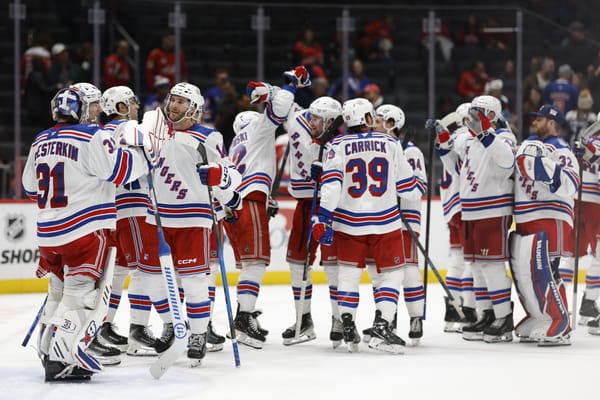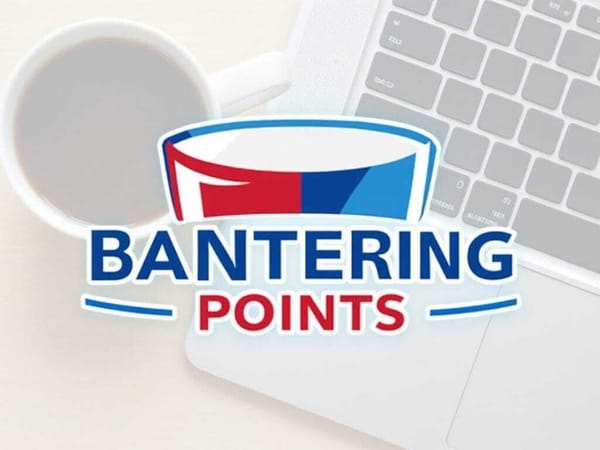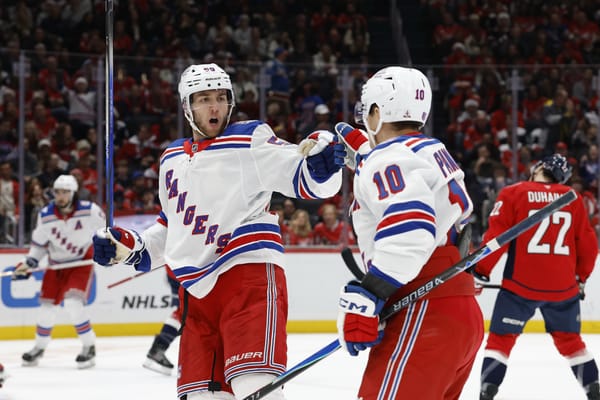Assessing the Rangers’ Prospect Needs Ahead of the 2020 NHL Draft
A very strong prospect pool still has room for improvement.
The NHL Draft is a stressful event for every team, though for some more than others. Rebuilding teams are under immense pressure to build a credible foundation for a new team and prove to fans that a year of suffering was worth it. Contending teams are, of course, thrilled with their standing but have limited resources to replenish the ranks or risk an eventual organizational crash
The Rangers, relatively speaking, find themselves in a fairly comfortable position. They’re a young team that is demonstrably rising, possess one of the top prospect pools in the league, and will enter the 2020 Draft (whenever it will be) with 10 selections.
The Rangers need a strong draft just like any other team, but with so many picks to supplement an organization already deep with young talent at all levels, Head Scout Gordie Clark and his scouting staff have more breathing room than most.
The general strategy for the NHL Draft should be taking the best player available. There is some slight wiggle room in later rounds when gaps in perceived talent diminish, but given how the odds are stacked against most players taken after the top few picks, beggars can’t be choosers and teams need to claim any talent they can. It’s better to have good players in a position or role you don’t need than bad players in ones you do.
As one NHL scout told Blueshirt Banter, “most guys are 4-5 years out anyway, so who knows what your depth is like then.” The Joey Keane-for-Julien Gauthier trade showed you can always trade from a strength to address a weakness down the line.
But for the sake of discussion, suppose the 2020 NHL Draft lines up perfectly for the Rangers, where every time they are on the clock the top player on their list happens to also address an organizational need? What types of prospects would the Rangers most like to add?
Here is a look at the current Rangers’ prospect needs, ranked from highest-to-lowest priority.
Tier One - High Priority
Impact Centers
Note: The depth charts included in this article were loosely grouped and then sorted by age. Please don’t read too deeply into orderings.
Center is ostensibly the team’s strongest position. Mika Zibanejad is the real deal and Filip Chytil is on his way, while Ryan Strome had a career year and gives the organization three productive centers who will be under the age of 28 next season.
But remember that we’re talking about drafting teenagers and projecting five years down the line. Mika Zibanejad, if he is still in New York, will be well into his 30s. Ryan Strome seems primed to be an eventual cap casualty, but otherwise would also be in his 30s.
So who currently in the organization has the chance to be a top-nine center on the right side of the aging curve at that point? Filip Chytil is of course a rock-solid option. It’s getting late early for Lias Andersson and Brett Howden, who have yet to prove NHL-capable and likely peak out on the third line even if they do get over the hump.
The only other decent bet is Karl Henriksson. The 2019 second-round pick is very talented and for sure could turn into a quality middle-six center in the NHL, but he’s very raw and has yet to prove himself in the Swedish pros.
The Rangers need centers with serious upside. The good news is that they have picks at 13 and 21 (subject to change depending on lottery and playoff outcomes) and the 2020 first-round is heavy with center options. To reiterate, the mission is to select the best player available regardless of position, but all else being equal the Rangers would probably love to walk away from the first round with at least one center.
Skilled Left Wingers
You’ll be hard-pressed to find many teams with a better one-two combo at any position than the Rangers have at left wing with Artemi Panarin and Chris Kreider, but they’re both closing in on the wrong side of 30. Beyond them, any real upside is exclusive to Morgan Barron, who has plausible middle-six upside but projects more comfortably as a quality bottom-sixer.
The Rangers could solve this internally by moving someone like Vitali Kravtsov to the left side, but the most convenient solution would be if they were able to add a natural left-winger with upside. Landing a bonafide top prospect like Alexander Holtz or Cole Perfetti at 13th overall would most emphatically address this weakness, but even a skilled left-winger in round three would do some work to fill need down the pipeline.
Tier Two - Basic Needs
Depth at Right Defense
In terms of pure quantity, this is the most deprived area of the Rangers’ organizational depth chart. Nils Lundkvist, taken in the 2018 first-round, is conservatively one of the top-five right-handed defense prospects in the entire NHL. After him, though, the depth chart is bare-bones. Hunter Skinner, drafted in the fourth round last summer, deserved much more credit as a prospect than I initially gave him, but he’s still ultimately a pretty typical fourth-round pick. Those two are the extent of the team’s remotely realistic potential NHL options.
Of course, the lack of depth is in part due to graduating three prospects recently in Tony DeAngelo, Adam Fox, and Neal Pionk, who was packaged to acquire Jacob Trouba. Even if you consider the worst-case scenario, where DeAngelo is a cap casualty and Trouba never finds his Winnipeg form, the Rangers would probably be pretty well positioned with Fox and Lundkvist anchoring the right side for years to come.
The Rangers need to add bodies. If righty Jamie Drysdale, currently projected to go in the top-ten, falls to the Rangers at 13, then so be it. You invest in that kind of talent, laugh at your embarrassment of riches, and eventually deal with the logjam if and when that becomes a problem. But in terms of what it would take to address this need, a decent prospect or two in rounds three-through-seven is all that’s really necessary.
Center Depth
We already discussed the team’s need for a highly talented center, but truthfully they need any help they can get at the position. The Rangers recently added to Howden and Andersson with three college free agents in Patrick Khodorenko, Justin Richards, and Austin Rueschhoff I’m not sure any individually inspire confidence, but collectively there’s a decent chance the Rangers could find a bottom-sixer among this group. The Rangers seemingly look okay at pivot right now.
But those players will all be at least 22 years old by next October, putting them close to the end of their prospect curves. The Rangers need bodies at the opposite end of that prospect cycle. Center is not a position to mess around with. Your team is in trouble if it lacks four capable centers, while any excess at the position can either be moved to wing or traded for good value.
Tier Three - Non-Essential Wish List
High-Upside LHD
Your 2014 Volkswagen is perfectly functional and what you could really use is a new dining room set to replace your IKEA furniture, but wow would you be thrilled to be a contestant on The Price is Right and win a new Lexus.
That’s where the Rangers currently stand at left defense. K’Andre Miller, Matthew Robertson, and Zac Jones are a nice trio. But if there’s first-pairing upside to be reached on a high shelf, those three can only graze it with their fingers if they stand on their tippy-toes. They’re close and we can’t rule out the possibility they eventually get there, but a bonafide, A-prospect would really take things up a notch.
The 2020 Draft, for better or worse, is the wrong place to look for that kind of prospect. The aforementioned Drysdale fits the description perfectly but is right-handed. Otherwise, it’s a weak draft for defensemen, with the top lefties in a similar vein as the Rangers’ current crop who flirt with top-pairing upside but don’t staunchly project there right now.
Goaltender
It seems counter-intuitive given how the goaltending situation has played out. Igor Shesterkin and Alexandar Georgiev are very young goaltenders who have done the unthinkable and forced a still very capable Henrik Lundqvist to the sidelines. Tyler Wall was just recently signed, who alongside Adam Huska gives the Rangers two solid prospects in the minor league ranks.
The Rangers are well stocked with young goaltenders, but they’re all in the 22-to-24 age range. Their timelines conflict and in the coming couple of years that list will be whittled down to only one or two of them on the NHL roster.
It’s a perfect example of how building a prospect pool is a Sisyphean task. If you do the job right, your guys will graduate and leave holes in the pipeline, forcing you to start over again. Left for the next cycle is only 19-year-old Olof Lindbom, who was a questionable pick to begin with in the second round in 2018 and whose stock has plummeted further due to injuries and mediocre play.
Drafting goaltenders with late picks generally offers a good return on investment, and in the Rangers’ case particularly they could use a teenager on the depth chart who could be ready to join the Rangers’ pro ranks by the time the current group is narrowed down.
Tier Four - Low Priority
Left-Wing Depth
Though the Rangers have a pretty sizable need for a left-winger with upside, their general body count at the position is actually looking pretty good. Morgan Barron was already mentioned as a very strong bet to make the NHL and may even push beyond a bottom-six label. Tim Gettinger is approaching sink-or-swim time but does have runway left and has the skillset to establish himself as a fourth-liner. Adam Edstrom and Leevi Aaltonen, both drafted in 2019, are the long-term bets and, although they’re complete opposites in style, share similar upside as bottom-sixers. Even Eric Ciccolini, who typically plays right-wing, is a left-handed shot who has experience on his natural side. There’s absolutely room to add, but in terms of analyzing team needs the Rangers can feel content with what they already have.
Left Defense
I noted that a legit top prospect would be a welcomed addition to this part of the depth chart, but by any reasonable standard the Rangers have a great group of prospects on left defense. The order of Miller, Robertson, and Jones is debatable, but all three possess top-four upside. Beyond them, the Rangers have a solid collection of depth prospects. Tarmo Reunanen had another strong year in Finland. Rykov, Hajek, and Ragnarsson have all dropped in stock but still hold value as C-level prospects, and I’d even argue that Sean Day is too talented to be completely 100% ruled out.
A very particular critique of this group would be that, along with Ryan Lindgren, it is heavy shutdown and possession-oriented defensemen with only Zac Jones projecting as a meaningful offensive contributor. One might argue that it wouldn’t hurt to add another. Generally speaking, though, the Rangers look good here.
Right Wing
It’s hard to understate just how stacked the Rangers are at right wing. Pavel Buchnevich is obviously nowhere near prospect status anymore, but having just turned 25 he could still have many years ahead as a Ranger. From there, Kaapo Kakko is still an elite prospect despite his disappointing rookie campaign. Vitali Kravtsov likewise struggled this season but still possesses top-six upside. Julien Gauthier showed well in his Blueshirt audition and is a good bet as an NHL forward, and maybe even a really good one.
The depth is also good. Lauri Pajuniemi had a breakout season in Finland, and while there are questions about how his whole game will translate in North America its impossible to ignore the numbers. Eric Ciccolini has a low-key impressive freshman season for Michigan. Riley Hughes and Jake Elmer were fringe prospects who didn’t have good seasons, but I think still rank as NHL prospects.
An insatiable criticism of this group would be that it could maybe use someone with more defensive gumption, but if the Rangers aren’t thriving at right wing with this crop of players in three years then something went horribly wrong. In fact, a bullish projection would see an overflow that forces one or two to left wing or the trade block.
Not to belabor the point, but the Rangers will have to play whatever hand the draft deals them. Grab the best talent available and worry about building a roster later. It’s also important to understand that there will be other opportunities to fill in the gaps. The Rangers own all of their picks for the foreseeable future as well as Buffalo’s third-round pick and Ottawa’s fourth-round pick in 2021. But it’s clear that the Rangers need certain types of prospects more than others, and if the Hockey Gods are merciful then they’ll be able to round out the depth chart.




